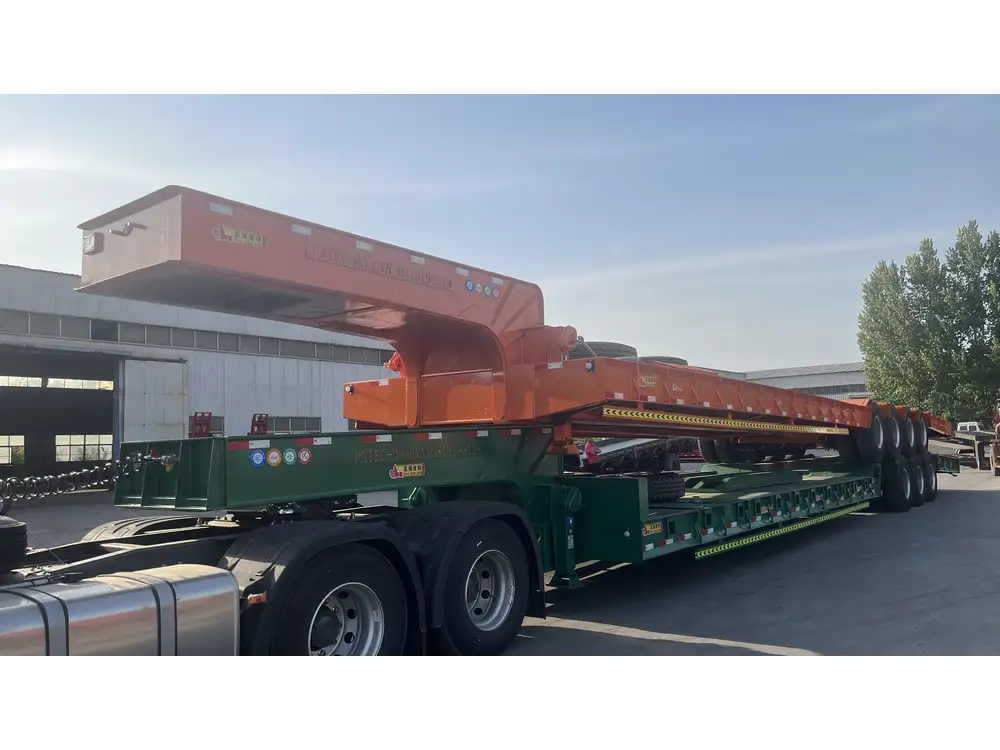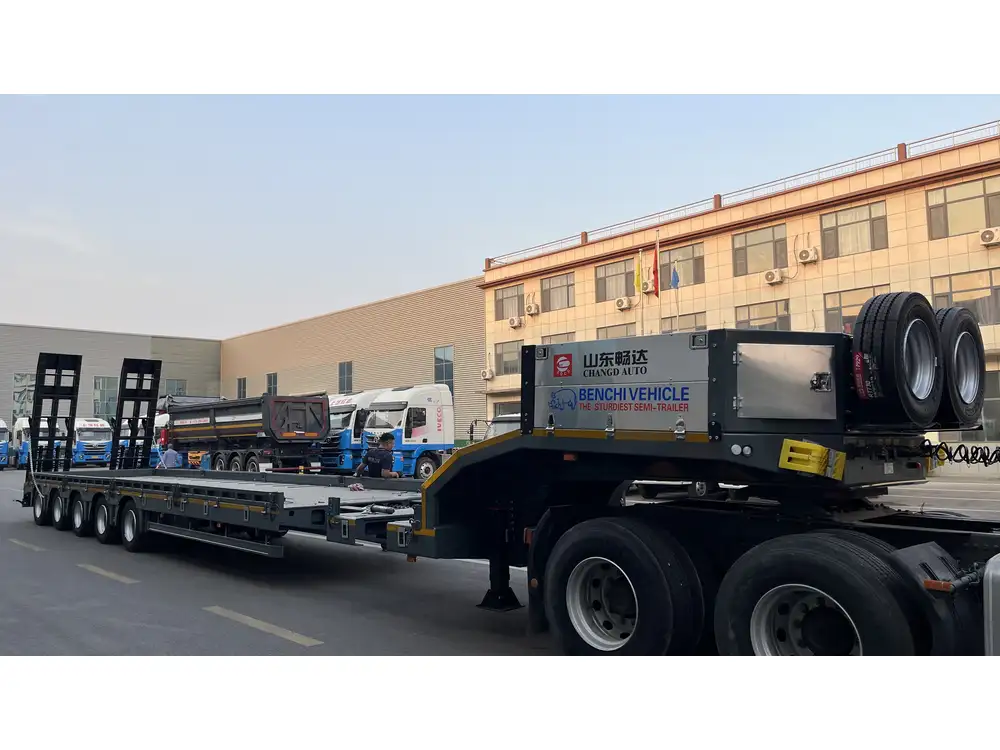Raising the landing gear of a semi-trailer is a seemingly straightforward task, yet it harbors intricacies that, if overlooked, can lead to operational inefficiencies, safety hazards, and potential damage to the equipment. This comprehensive guide aims to illuminate the proper techniques and considerations necessary for raising semi-trailer landing gear effectively.
Understanding Semi-Trailer Landing Gear
Before delving into the mechanics of raising landing gear, it’s crucial to understand its structure and purpose. Semi-trailer landing gear consists primarily of two main components: the legs and the crank mechanism.
- Legs: These are the retractable supports that stabilize the trailer when it’s unhitched from the tractor. They distribute the weight of the trailer and its cargo, ensuring stability during loading and unloading operations.
- Crank Mechanism: This is the device used to raise and lower the landing gear legs. Operated manually or sometimes through an electric mechanism, it enables the driver to adjust the height of the trailer for coupling and decoupling from the tractor.
Common Types of Landing Gear Systems
| Type | Description | Common Use Cases |
|---|---|---|
| Manually Operated Gear | Crank system that requires physical effort to operate; highly reliable and low maintenance. | Most standard trailers |
| Electric Landing Gear | Automated system powered by the vehicle’s electrical system, reducing manual effort. | Larger or specialized trailers |
| Air-Operated Gear | Utilizes compressed air to raise and lower the legs; requires an air compressor and can be quicker. | Long-haul trucks |

The Essential Process: Which Way to Crank?
The fundamental question that every driver should ask when addressing the task of raising semi-trailer landing gear is, “Which way should I crank the landing gear?” Here’s a breakdown of the process.
Cranking Techniques
- Determining the Direction: When cranking the landing gear, always remember the following:
- To Raise: Turn the crank clockwise. This action threads the landing gear legs upward, reducing their length.
- To Lower: Turn the crank counterclockwise. This releases the tension, allowing the legs to extend.
Safety Precautions While Raising Landing Gear
Before beginning to crank, it’s vital to ensure safety measures are in place:
- Park on Level Ground: Always position the trailer on flat, level terrain to prevent unintended rolling or shifting.
- Secure the Trailer: Engage the parking brakes and, if applicable, use wheel chocks to minimize movement.
- Inspect Equipment: Regularly assess the landing gear for any signs of wear, rust, or damage. If issues arise, consider maintenance or replacement before operating.

Step-by-Step Guide:
- Position the Trailer: Align the unit on even ground.
- Engage Parking Brakes: Activate the trailer’s onboard brakes to prevent movement.
- Inspect the Crank Mechanism: Ensure the crank is free from obstructions and is functioning correctly.
- Crank the Handle: Begin turning the crank clockwise:
- Observe the legs retracting upward.
- Continue until the trailer is at the desired height.
- Final Adjustments: When you feel resistance, stop cranking. This indicates that the landing gear is securely in position to support the trailer.
- Disconnect the Tractor: Ensure the connection between the tractor and trailer is fully disengaged.
Troubleshooting Common Issues
While cranking the landing gear is relatively simple, various issues may arise that require troubleshooting. Here are some potential problems and solutions:
1. Crank Difficulties

Symptoms:
- The crank feels stuck or does not turn easily.
Solutions:
- Lubrication: Apply suitable lubricant to the crank mechanism.
- Check for Obstructions: Inspect the area for debris or damage preventing normal operation.
- Inspect for Wear: Assess for wear and tear on the crank and gear itself.
2. Uneven Leg Operation

Symptoms:
- One leg raises or lowers faster than the other.
Solutions:
- Alignment Check: Confirm that both legs are aligned correctly.
- Mechanical Inspection: Inspect the individual components of each leg for signs of malfunction.
3. Leg Not Retaining Height

Symptoms:
- The landing gear lowers unexpectedly after cranking.
Solutions:
- Inspect Gear Locks: Ensure that the locking mechanisms are functioning correctly.
- Examine for Damage: Look for fractures or bends in the leg assembly.
Enhancing Your Understanding of Landing Gear Operations
Understanding the mechanics extends beyond just the physical actions of cranking. Here are additional aspects every operator should consider:

The Role of Weight Distribution
Proper weight distribution is vital when operating a semi-trailer. An improperly loaded trailer can cause strain on the landing gear mechanism. Operators should always ensure that cargo is well distributed down the center of the trailer to maintain balance and avoid complications during the raising process.
Local Regulations
Notably, various regions have specific regulations concerning trailer operations. Ensure compliance with local laws, which might include specific safety protocols or equipment standards for landing gear.
The Importance of Regular Maintenance
Maintaining landing gear is essential not only for functionality but also for safety. Here are critical maintenance tips:
- Routine Inspections: Schedule regular assessments of the landing gear for corrosion or mechanical failure.
- Lubricate Moving Parts: Keep components of the landing gear adequately lubricated to ensure smooth operation.
- Replace Worn Out Parts: Stay proactive and replace any aging or damaged parts before they lead to operation failures.

Equipment Upgrades and Innovations
The landscape of semi-trailer equipment is evolving, with manufacturers introducing innovations that enhance the functionality and ease of use of landing gear. Here are noteworthy advancements:
Electric and Automated Systems
Modern trailers increasingly feature electric landing gear systems which reduce physical effort and improve efficiency. Operators can benefit from faster coupling and uncoupling capabilities. Furthermore, these systems often come with diagnostic features that alert users to potential malfunctions before they become problematic.
Smart Technology Implementations
The integration of smart technology in trailer systems provides real-time data on weight distribution, landing gear status, and performance metrics. This technology allows drivers to make informed decisions while boosting overall safety and efficiency.

Conclusion
Raising semi-trailer landing gear might appear straightforward, yet it is an operation laden with complexities and considerations. Understanding the mechanics, ensuring safety practices, troubleshooting potential issues, maintaining equipment, and keeping up with advancements are fundamental to optimizing this critical task.
By mastering these elements, operators enhance their efficacy, safety, and enjoyment while handling semi-trailer operations. The journey may have its challenges, but with preparation and knowledge, users can navigate any concerns that may arise confidently and efficiently.



